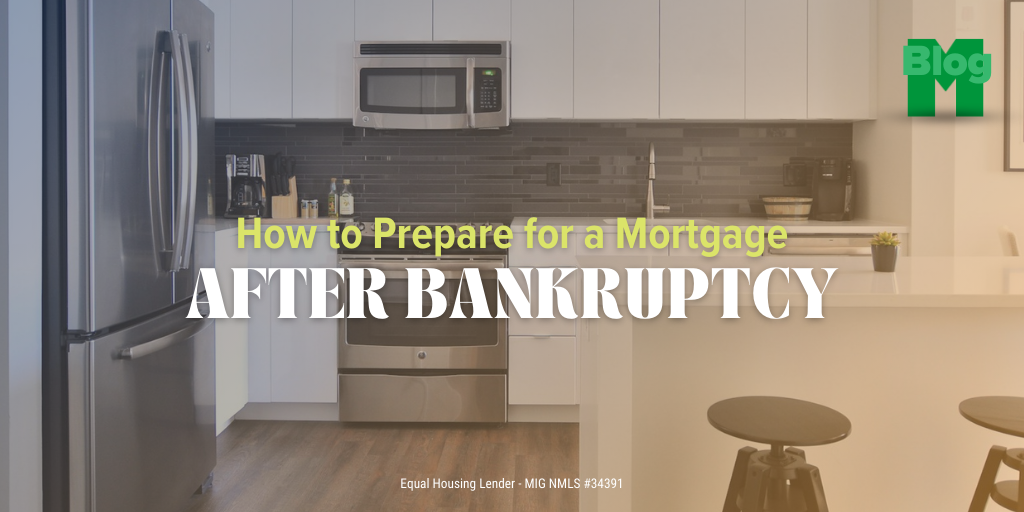
Filing for bankruptcy can feel like a huge setback, but it doesn’t mean you have to give up on your dream of owning a home! With a bit of patience and some strategic steps, you can rebuild your financial profile and get back on track toward mortgage approval. Here’s a friendly guide to help you prepare for a mortgage after a bankruptcy and turn your fresh start into a homeownership reality.
1. Know the Waiting Periods for Different Loans
First things first—understanding the waiting periods for various types of loans can help you set realistic expectations for when you can apply for a mortgage after bankruptcy. The good news is that each loan type has its own rules, and some might work for you sooner than others:
- FHA Loans: You can apply for an FHA loan just two years after a Chapter 7 bankruptcy discharge, provided you’ve been rebuilding your credit and steering clear of new debts. For Chapter 13 bankruptcy, there isn’t a set waiting period after discharge, but you’ll need at least 12 months of on-time payments in your bankruptcy plan and the bankruptcy court’s okay to proceed.
- VA Loans: For veterans and active-duty service members, VA loans also require a two-year waiting period after Chapter 7 discharge. For Chapter 13, you may qualify after 12 months of on-time payments with court approval.
- USDA Loans: USDA loans, which are great for homes in rural areas, generally have a three-year waiting period after a Chapter 7 bankruptcy discharge. For Chapter 13, it can be as short as one year if you meet the requirements.
- Conventional Loans: Conventional loans tend to have stricter guidelines, with a four-year waiting period after a Chapter 7 bankruptcy discharge and two years after a Chapter 13 discharge.
These timelines are your starting point. Knowing which loan type works best for you will help you plan your path forward!
2. Rebuild Your Credit, Step by Step
Rebuilding your credit is a key step after bankruptcy. Think of it as a financial “spring cleaning” where you’re tidying up your credit profile to show lenders you’re ready for a mortgage again:
- Make Every Payment on Time: Consistently making on-time payments is one of the most important things you can do. Whether it’s for rent, utilities, or a credit card, every on-time payment helps rebuild your credit history.
- Use a Secured Credit Card: A secured credit card is a great tool for rebuilding credit. It works like a regular credit card, but you pay a deposit upfront that becomes your credit limit. Use it for small purchases and pay off the balance each month to start showing positive payment behavior.
- Keep Your Credit Utilization Low: This means not maxing out your credit cards. Aim to use less than 30% of your available credit to keep your score climbing.
- Regularly Check Your Credit Report: Make sure there aren’t any mistakes or old information that could be dragging down your score. Correcting errors can sometimes boost your score more quickly than you’d expect.
3. Save Up for a Bigger Down Payment
A larger down payment can open more doors for you when applying for a mortgage after bankruptcy. A larger down payment can make lenders more comfortable and help you secure better loan terms, even if your credit score is still bouncing back.
4. Write a Letter of Explanation
Lenders like to see a clear picture of what led to your bankruptcy and what steps you’ve taken to turn things around. Writing a Letter of Explanation gives you the chance to share your story. Be open and honest about the circumstances that led to your bankruptcy, what you’ve learned, and how you’ve strengthened your financial habits since then. This personal touch can make a big difference, especially in manual underwriting situations.
5. Get Preapproved for a Mortgage
Getting preapproved is a great way to show sellers and real estate agents that you’re a serious buyer. Plus, it gives you a clear picture of how much you can afford. During preapproval, lenders will look closely at your financial situation, so be ready to provide recent pay stubs, tax returns, bank statements, and your bankruptcy discharge documents. The more prepared you are, the smoother the process will be.
6. Stay Positive and Persistent
Recovering from bankruptcy is a journey, and it takes time. But with patience, persistence, and a solid plan, you can get back on the path to homeownership. Keep working on your credit, saving for a down payment, and partnering with professionals who can guide you along the way.
Remember, bankruptcy is a setback, not a dead end. With the right steps and support, you can move forward, rebuild your financial future, and achieve your dream of owning a home. We’re here to help you every step of the way!
![Mortgage Investors Group in [Dynamic1]](../assets/images/mortgage-investors-group.svg)


